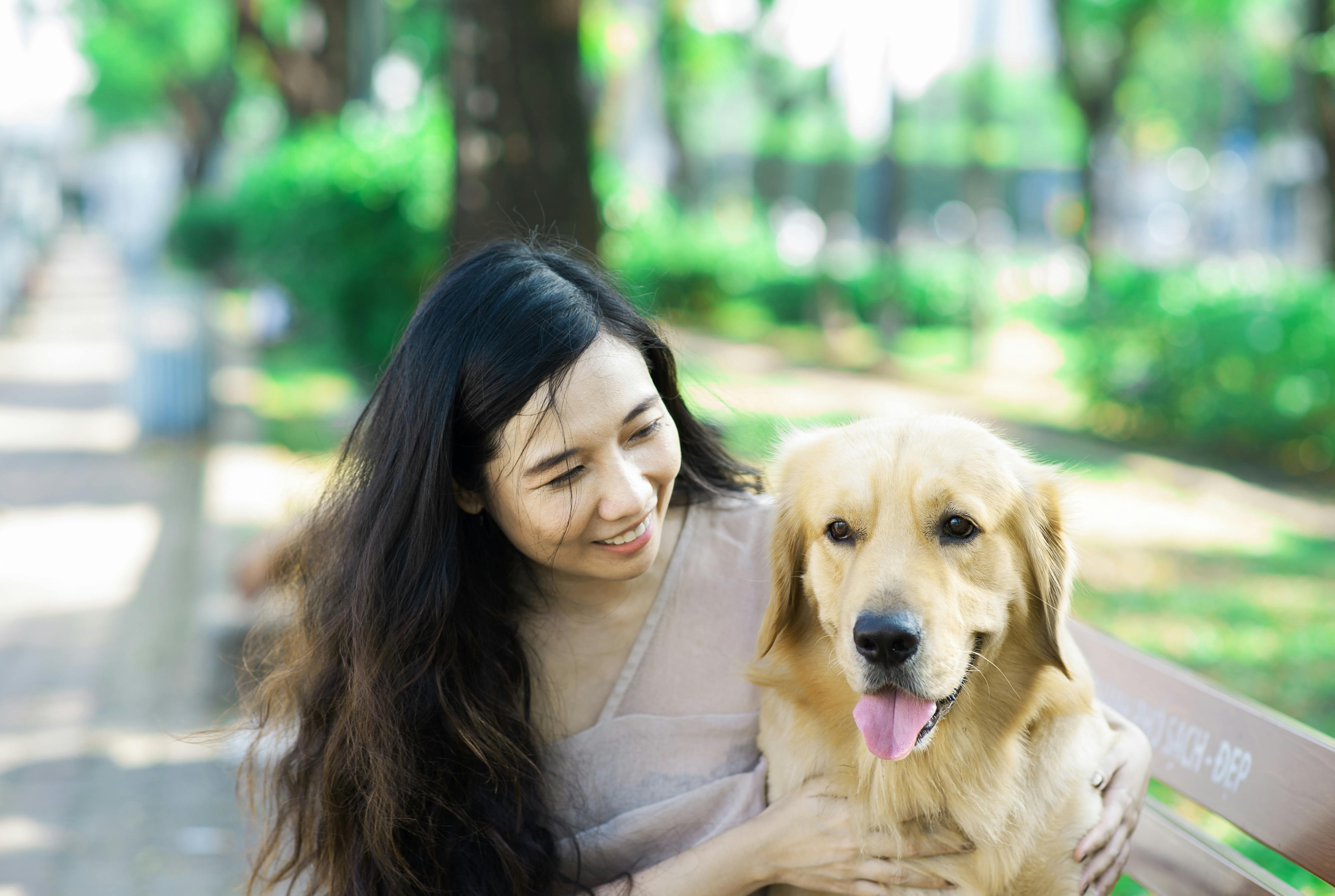Are you ready to take your furry friend on a Dog Grooming Walk? In this article, Jackson will guide you through the wonderful world of grooming your dog while going for a walk. You will learn all about the benefits of grooming your dog, how to do it safely and effectively, and even discover some fun activities to make the experience enjoyable for both you and your pup. So grab your leash and get ready for a paw-some adventure!
Understanding the Concept of a Dog Grooming Walk
What is a Dog Grooming Walk?
A dog grooming walk is a combination of grooming and exercise for your furry friend. It involves taking your dog for a walk while also attending to their grooming needs. During this walk, you not only get to keep your dog fit and active but also ensure that their coat and overall appearance are well-maintained.
The Importance of Regular Grooming, Walking Combination
Regular grooming is essential for dogs as it helps keep their coat clean, healthy, and free from mats and tangles. It also promotes good skin health and can prevent skin infections. On the other hand, walking is vital for a dog’s physical and mental well-being. It allows them to burn off excess energy, stimulate their senses, and maintain a healthy weight. By combining grooming and walking, you provide your dog with both physical exercise and necessary grooming care, resulting in a happier and healthier companion.
Recommended Grooming Practices Before the Walk
Choosing the Right Dog Grooming Tools
Before you embark on a grooming walk, it’s essential to have the right grooming tools at hand. The tools you choose should depend on your dog’s breed and coat type. For example:
- A slicker brush is ideal for dogs with medium to long hair as it can remove loose fur and prevent mats.
- Bristle brushes work well for short-haired breeds, helping to distribute natural oils and stimulate the skin.
- De-shedding tools can be useful for breeds that shed heavily, removing loose hair and minimizing shedding.
Methods for Brushing Different Types of Coats
Different coat types require different grooming techniques. Here’s a quick guide:
- Smooth or short coats: Use a bristle brush to remove loose fur and stimulate the skin.
- Long or medium coats: Use a slicker brush to remove tangles and mats gently. Follow it up with a comb to ensure thorough brushing.
- Double coats: Use an undercoat rake to remove loose fur from the undercoat and a slicker brush for the topcoat.
Pre-Walk Cleaning and Inspection
Before you head out for your grooming walk, take a few minutes to clean and inspect your dog. You can use a warm damp cloth to wipe away any dirt or debris from their coat. Pay attention to their ears, eyes, and paws. Look for any signs of abnormalities such as redness, discharge, or swelling. By thoroughly inspecting your dog before the walk, you can address any potential health issues promptly.
Practical Tips for a Successful Dog Grooming Walk
Walking Routes and Routine
Planning your walking route is crucial for a successful grooming walk. Choose a route that offers a variety of different surfaces like grass, pavement, or dirt. This variety will help naturally file your dog’s nails and keep them shorter. Additionally, establish a walking routine that suits both you and your dog’s schedule. Consistency is key to maintaining good habits and ensuring your dog gets regular exercise and grooming.

Keeping Your Dog Engaged During the Walk
To keep your dog engaged during the grooming walk, incorporate small training exercises along the way. You can practice basic commands such as sit, stay, or heel. Use treats or toys as rewards to reinforce positive behavior. Exploring new scents and allowing your dog to interact with their surroundings can also keep them mentally stimulated and engaged during the walk.
Responding to Dog’s Behavior During the Walk
Pay attention to your dog’s behavior during the grooming walk. If your dog becomes anxious or fearful during grooming or walking, take a step back and reassess the situation. Look for signs of discomfort such as panting, tail tucking, or excessive pulling on the leash. It’s important to respond to your dog’s behavior in a way that makes them feel safe and comfortable. Be patient and make adjustments to the grooming or walking routine as needed.
Post-Walk Grooming Tips
Cleaning and Grooming after the Walk
Once you return from your grooming walk, it’s time to clean and groom your dog. Use a soft brush or comb to remove any dirt or debris that may have accumulated in their coat during the walk. Pay special attention to their paws, as they can collect dirt, pebbles, or other foreign objects. If necessary, you can use a damp cloth or canine wipes to clean their paws and other areas. This post-walk grooming session helps maintain your dog’s cleanliness and hygiene.
Checking for Parasites and Other Foreign Objects
After the walk, it’s essential to check your dog for parasites such as fleas or ticks. Use a flea comb or your fingers to carefully inspect your dog’s fur, paying close attention to areas like the neck, behind the ears, and under the tail. If you spot any parasites, take immediate steps to remove them effectively. Additionally, check for any foreign objects like burrs or splinters that may have lodged in your dog’s coat or paws.
Rewarding Your Dog Post-Walk
Rewarding your dog after the grooming walk is a great way to reinforce positive associations with grooming and walking. Offer treats, praise, or playtime as a reward for their good behavior during the walk. This positive reinforcement helps create a positive experience and builds trust between you and your dog. It also encourages them to look forward to future grooming walks.
Importance of Paw Care During Grooming Walks
Choosing Dog-friendly Walking Surfaces
When selecting the walking surfaces for your grooming walk, it’s important to choose ones that are safe and dog-friendly. Avoid surfaces that are too hot, such as asphalt on a scorching summer day, as they can burn your dog’s paws. Similarly, extremely cold or icy surfaces can cause discomfort or even injuries. Opt for grass, dirt, or softer paths whenever possible to ensure your dog’s paws are protected.

Protecting Dog’s Paws from Harmful Surfaces
To protect your dog’s paws during grooming walks, you can consider using paw wax or dog booties. Paw wax provides a protective layer to shield your dog’s paws from hot pavement or rough surfaces. Meanwhile, booties offer additional protection and can be especially useful during winter months or in areas where the terrain is rough or hazardous. These measures help prevent paw pad injuries and keep your dog’s paws in good condition.
Post-Walk Paw Checks and Maintenance
After each grooming walk, take a few moments to inspect your dog’s paws. Look for any cuts, scrapes, or signs of irritation. Gently clean the paws with warm water and mild soap if needed. If you notice any issues, consult your veterinarian for appropriate care and treatment. Regular paw maintenance helps ensure your dog’s paws remain healthy and minimizes the risks of infections or injuries.
Combining Training with Grooming Walks
Basics of Dog Training
Training is an essential part of your dog’s overall well-being. It helps establish communication, discipline, and strengthens the bond between you and your furry friend. Basic training commands such as sit, stay, and come can be incorporated into your grooming walks. Training should be positive and reward-based, using treats or praise to reinforce desired behaviors.
Incorporating Training Exercises During Walks
During your grooming walks, make use of training exercises to keep your dog mentally stimulated and to reinforce obedience. For example, you can practice loose-leash walking, where your dog walks beside you without pulling on the leash. You can also practice recall by calling your dog’s name and rewarding them for coming to you promptly. These training exercises help improve your dog’s behavior and responsiveness.
Benefits of Walking and Training Combination
Combining walking and training provides numerous benefits for your dog. It allows them to expend energy, maintain physical fitness, and practice good behavior simultaneously. Grooming walks provide an excellent opportunity to reinforce training commands, as your dog is more engaged and receptive during exercise. The combination ultimately leads to a well-rounded and obedient pet.
Special Care for Breeds with Particular Grooming Needs
Understanding Different Breed’s Grooming Needs
Different dog breeds have varying grooming needs due to their unique coat types and characteristics. For example:
- Long-haired breeds require more frequent brushing to prevent mats and keep their coat tangle-free.
- Breeds with wrinkles or folds, such as Bulldogs or Shar-Peis, need extra attention to ensure those areas are clean and dry.
- Dogs with hair that continually grows, such as Poodles or Shih Tzus, often require professional grooming to maintain their appearance.
Understanding your dog’s specific grooming needs is crucial to providing appropriate care during grooming walks.

Tailoring the Walk to Suit Specific Breeds
When planning your grooming walks, it’s important to tailor the walk to suit your dog’s specific breed and grooming needs. For example:
- If you have a small breed with short hair, they may not require extensive brushing. Focus more on exercise and mental stimulation during the walk.
- If you have a large or double-coated breed, allow more time for brushing and be mindful of their coat maintenance requirements.
- Certain breeds may need extra care for their ears, teeth, or nail trimming. Incorporate these grooming tasks into your grooming walks as necessary.
Special Grooming Tips for Specific Breeds
Each breed may require specific grooming techniques or considerations. Research and consult with breed-specific resources or professional groomers to learn more about the unique needs of your dog’s breed. Additionally, seek guidance on grooming tools and techniques that are most suitable for your breed. By following breed-specific grooming tips, you can ensure your dog’s coat and overall appearance are well-maintained.
Dealing with Dog Grooming Walk Challenges
Addressing Grooming Related Dog Anxieties
Some dogs may experience anxiety or fear related to certain grooming tasks or walking environments. It’s important to address these anxieties in a patient and understanding manner. Gradually introduce them to grooming tools or walking routes, allowing them to acclimate at their own pace. Providing positive reinforcement, treats, and plenty of praise during grooming walks can help overcome anxieties and build confidence.
Managing Aggressive Tendencies During Walks
If your dog displays aggressive tendencies during grooming walks, it’s important to address the issue promptly and seek professional guidance if needed. Aggression can stem from fear, territorial behavior, or other underlying causes. Never punish or physically reprimand an aggressive dog during the walk, as this can escalate the situation. Instead, consult with a professional dog trainer or behaviorist to develop a plan for managing and modifying the aggressive behavior.
Overcoming Common Problems Related to Dog Walking and Grooming
In addition to anxieties and aggression, there may be other common problems you encounter during grooming walks. Some dogs may pull on the leash, refuse to walk, or become overly excited. To overcome these issues, consider:
- Using positive reinforcement to encourage desired behavior.
- Seeking professional training or guidance.
- Gradually desensitizing your dog to challenging situations.
- Breaking the walk into shorter sessions or incorporating more breaks.
Each dog is unique, so it may take time and patience to address specific problems. With consistency and appropriate strategies, you can overcome common challenges and enjoy successful grooming walks with your dog.
Professional Assistance for Dog Grooming Walks
When to Get Professional Help
While grooming walks can be an enjoyable bonding experience between you and your dog, there may be situations where professional grooming assistance is necessary. Consider seeking professional help if:
- Your dog requires specialized grooming techniques or styling.
- You are unsure how to address specific grooming challenges, such as matting or coat maintenance.
- Your dog exhibits extreme anxieties or aggressive behaviors during grooming walks.
Professional groomers have the expertise and experience to handle complex grooming needs and can provide guidance and support when necessary.
Finding a Professional Dog Groomer/Walker
To find a professional dog groomer or walker, ask for recommendations from friends, family, or your veterinarian. Research local grooming salons or mobile grooming services in your area. Take time to read reviews and ask about the groomer’s qualifications and experience. A reputable groomer should be knowledgeable about various breeds, grooming techniques, and be able to answer any questions or concerns you may have.
Evaluating Quality of Professional Services
When evaluating the quality of professional grooming services, consider the following factors:
- Cleanliness and hygiene of the grooming facility or grooming van.
- Friendliness and professionalism of the groomer.
- The groomer’s ability to handle different breeds and coat types.
- How the groomer addresses your concerns or specific grooming requests.
- The overall well-being and comfort of the dogs they groom.
Observing and asking questions will help you make an informed decision about the quality of professional grooming services and ensure that your dog receives the best care possible.
Incorporating Health Checks Into Grooming Walks
Routine Health Checks During Grooming
Grooming walks offer an excellent opportunity to perform routine health checks on your dog. While grooming, pay attention to the following:
- Skin and coat abnormalities: Look for signs of rashes, hot spots, excessive dryness, or flakiness.
- Ears: Check for redness, discharge, excessive wax buildup, or foul odor, which may indicate an ear infection.
- Eyes: Ensure the eyes are clear, free from discharge, and show no signs of redness or irritation.
- Teeth and gums: Watch for signs of tartar buildup, gum inflammation, or bad breath.
- Overall body condition: Assess your dog’s weight, muscle tone, and general appearance.
Spotting potential health issues early allows you to seek veterinary care promptly and address any concerns before they worsen.
Spotting Potential Health Issues Early
During grooming walks, it’s crucial to be observant and vigilant for any signs of potential health issues. Some common indications that require attention include:
- Changes in appetite or water intake.
- Frequent itching, scratching, or licking.
- Lethargy or reluctance to engage in physical activity.
- Changes in bowel movements or urination habits.
- Foul odors from the ears, mouth, or body.
Discrepancies in any of these areas may suggest an underlying health problem. Prompt action, including consultation with a veterinarian, can help identify and address these issues effectively.
How Grooming Walks Aid in Long-term Dog Health
Grooming walks play a vital role in promoting long-term dog health. The combination of regular exercise and grooming contributes to:
- Healthy coat and skin: Regular grooming removes loose fur, prevents matting, and promotes good skin health.
- Weight management: Exercise during grooming walks helps maintain a healthy weight and prevents obesity-related health issues.
- Mental stimulation: Walking in different environments and incorporating training exercises keeps your dog mentally sharp and engaged.
- Early detection of health issues: Regular grooming walks allow you to spot potential health concerns early, providing timely care and intervention.
By incorporating grooming into your dog’s exercise routine, you can enjoy the benefits of both physical and grooming care, ensuring your furry friend stays happy and healthy.
Remember, grooming walks are not only about keeping your dog clean and looking good; they are also about spending quality time together and building a strong bond. Enjoy the journey and cherish the moments you share with your four-legged companion. Happy grooming walks!




